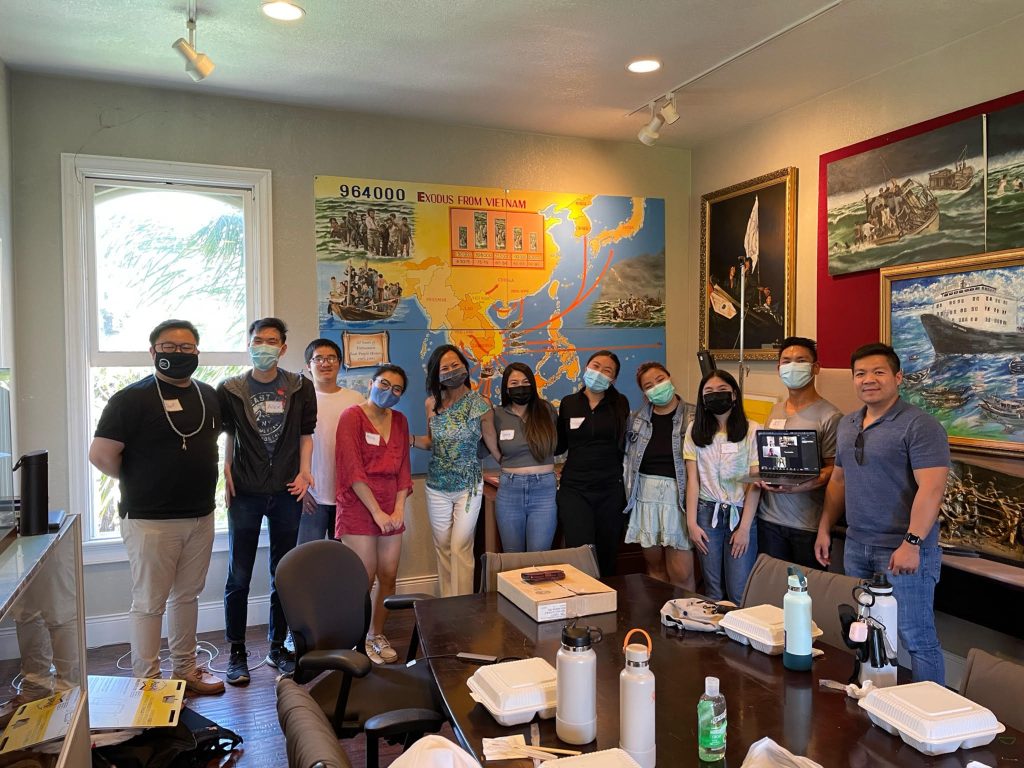When Nicole Taylor assumed the role of Silicon Valley Community Foundation CEO in 2018, it was following a scandal about the organisation’s toxic working environment and a tough rebuilding job was in front of her.
The Foundation back then had a growth mentality – in 2017, its endowment was worth $13.5 billion and its annual grantmaking that same year was $1.3 billion. Last year, its endowment was worth $360 million, and it disbursed $2 billion in grants, a more than 50 per cent increase from its grantmaking before Taylor’s leadership.
Taylor and the SVCF team spent 2019 putting together a plan for the foundation’s new direction. And almost as soon as it finished the plan, the pandemic hit. And then the Black Lives Matter protests in the summer of 2020. And then another Covid wave. But among the crises of the last few years, SVCF – led by Taylor and the new strategy – has worked to get more funding out faster.
She spoke to Alliance about the last several years, racial equity in philanthropy, donor-advised funds, and the meaning of community.

The Vietnamese American Roundtable. Photo credit: SVCF
Elika Roohi: You took over at Silicon Valley Community Foundation at the end of 2018 following controversy over the working environment there in previous leadership. Can you tell us what has changed since you took over?
Nicole Taylor: So, I joined in December 2018 and it was a few months after everything had gone public, and I was committed to rebuilding the culture and the values at the organisation. And the staff had already put quite a bit of time into both before I arrived. So we weren’t starting from scratch; the staff really did a lot of work. I was also committed to putting community back into community foundation. I’d followed what had happened, and I’d been in and out of the community foundation world since the early 90s, so I understood the core of what a community foundation is. It’s to serve the community where it sits. That’s what I was committed to.
I want philanthropy to actually listen to the people who are on the ground doing the work, leading the work. And give them the resources and get out of the way. Make sure they have what they need to do what they need to do.
In 2019, we embarked on a strategic planning process with Bridgespan, which involved a lot of listening. I was out a lot with board members, staff members, donors, community leaders, nonprofit partners – there were interviews and town halls. We did design labs with community leaders and non-profit leaders. And then we created a new strategic plan for this region, which as you probably know, is the most inequitable region in our country. Our vision is a community where everyone can lead financially secure, safe, and fulfilling lives. We focused on four key areas: reducing systemic disparities; building and supporting a strong and engaged community; growing a culture of effective philanthropy; and being a trusted and enduring institution for this community, particularly coming out of what had happened prior to my arrival.
So, we are encouraging – and have been since we finished our strategic plan – general operating support, capacity building support, and supporting communities of colour. We ended our strategic plan in March 2020, when the entire world changed – but quite frankly, it allowed us to focus. We had the plan, we had the guardrails, we had focus. Our communities were in crisis, everywhere was in crisis. But having the plan in place allowed us to get to donors and companies and say: ‘here, we have immediate need here’ and they stepped up. We’re using that as a springboard to continue to work.

Builders of Africa’s Future 2020 recipients are honoured with an award and a platform to showcase their businesses at the fifth annual African Diaspora Investment Symposium in January 2020. ADN is funded by the California Black Freedom Fund, one of SVCF’s funds.
You spent time developing a strategic plan for a particular reality, and then you finished it just as reality changed – did you feel that the strategic plan set you up for the crisis? Or did you need another pivot suddenly?
We were able to show up for our communities immediately. We showed up for the people in need. We showed up for our donors, and we had the mission and the vision all set and it was a siren call. Everybody in the organisation went from ‘What should we do?’ to ‘Here we are, we got it, let’s go. Let’s focus.’ Everyone in the organisation got hyper-focused on the role that we play and can continue to play, in helping our communities thrive.
I want to understand what ‘community’ means to Silicon Valley Community Foundation. Are you now thinking about community in a local sense, or is it the global community?
We’re thinking about our local community. By nature, being a community foundation, we serve a specific geographic location. In our case, there are two counties in the Bay Area that are technically Silicon Valley. And our own grant-making from our own endowment is focused solely on those two counties. Our Bay Area donors have a connection to many parts of the Bay Area, and we know that we have an impact in the broader region. While we focus on our two primary counties and encourage our donors and corporations that we work with to give in your backyard, we also know that the adjacent Bay Area counties are impacted by what happens here in Silicon Valley.
I was committed to putting community back into community foundation.
But we’re in a region of transplants, and our donors are the same as people who are working in service industries. Many come from other places, and we know that they want to have an impact on their home cities or states or countries. We work with 75 companies, just about all of them are global, and they also want to have an impact where they have a footprint in other countries, and we help them with that. We do giving internationally and help our donors through that. But we tell them: it’s not an either/or. You don’t just need to focus where you have an imprint. You can give here and there. There are enough resources here where we can do both.
On the question of resources – your grant-making last year was 20 per cent more than what it was the previous year. Can you talk about the internal processes that led to being able to disperse so much more funding?
One thing I will say that helped: we created funds on specific issues. So, we had several funds related to Covid – direct relief to individuals, small business, education, and the like. When there’s a natural disaster, we create a fund. After George Floyd’s murder, we created the California Black Freedom Fund with a number of other funding partners, aggregating the capital, doing the due diligence, and getting the resources out quickly. We made impact easy, and we made giving easy for our donors. It is something we’re going to continue, and it’s something in Silicon Valley that means something. When I say I’m going to raise a fund for X, that’s what happens here in venture capital, right? So, people understand what it means to be part of a fund, leveraging other dollars. We also work with the public sector, so they know that we’re leveraging not just other philanthropic dollars but public sector and policy.

Samaritan House. Photo credit: SVCF
At the beginning of the pandemic, you put out this public call for individuals to disburse funds from their donor-advised funds. How did your donors respond?
They really stepped up. It started in 2020, and we thought it’s probably the Covid anomaly. Everybody was giving everything they had, people were losing jobs, people were on the verge of homelessness, people went homeless. So, we thought it was going to be an anomalous year. But then 2021 hit, and we exceeded everything we did in 2020. And yes, Covid was still around and is still around, but in a different way. We weren’t in crisis after crisis, the same way we were in 2020. But still, 2021 was better in terms of giving. And I mean, it’s a combination of factors. Our hope is to continue. Let’s keep striking where we know it resonates with people, trying new things, and identifying other funds as the community’s needs come up. How do we really address those?
What do you think about the political heat on donor-advised funds with proposed legislation to limit how long philanthropists can keep their money in DAFs?
We’ve been deeply engaged and in many meetings about this with everyone – from folks in Congress to our fellow community foundations to the national donor-advised fund sponsors. There’s been a lot of work being done to get the facts out there because some of the legislation being proposed isn’t based on facts. Our donors aren’t sitting on their donor-advised funds – $2.27 billion dispersed this year is incredible. $777 million went to the Bay Area from our donors. They are moving their money. The average payout rate for donor-advised funds in 2020 was 18.7 per cent. Private foundations have a five per cent payout rate and most stick to the five per cent and that includes administrative costs. Donor-advised payouts are strictly grants out – that 18.7 per cent does not include administrative costs. That’s what we take care of. So, the fact that there’s legislation out there that’s not grounded on what we’re seeing in the data is something that we’ve been working on.
When there are very few of us [women of colour] in these seats, we carry a lot of responsibility and burden because often we are the ones who have to speak up.
This isn’t to say we’re opposed to any legislation. We just want to make sure it’s not going to hurt giving. We believe the legislation as it is now is going to put an undue burden, particularly on community foundations with the kind of administrative work that will be needed to fix a problem that doesn’t exist. It’s going to be costly for us, and donors aren’t going to want to pay extra fees for extra administrative burdens.
Another thing we want to share is that after two years if you haven’t made a grant we are on you. We don’t let you just sit on your DAF with no activity. We actually start contacting donors after a year, just letting them know: Hey, you didn’t give anything this year. Can we get in touch? Do you need more ideas? By the second year, if there’s no response, then we have a method of contacting donors. And if there’s still no response by the third year, we take the funds and put them into our community action fund and get it out. That’s common. That’s commonplace for community foundations, and it’s commonplace for national providers. Everyone who sponsors DAFs should follow that same playbook, not let the funds sit there. That’s an example of the kind of legislation that we think is good. And guess what? It gets more dollars out.
Do you find when you get in touch after two years it’s successful?
Absolutely. But we’re not talking a lot of funds. We have almost 2,000 funds, and we’re talking about 28 [that haven’t given out any money in the last two years]. It’s a small number. Unfortunately, for some, it’s a situation where the person may be deceased, and the family may not have realised the DAF was here. Others say, put it in the community action fund, you guys do good work. So, yes, donors absolutely respond. The ones who don’t –they may not be with us anymore or there’s some other personal aspect like they may have moved out of the country. But after two years, we move it into our funds and get it out. It’s a small number that are inactive.

Vietnamese American Roundtable. Photo credit: SVCF
We wanted to talk to you about racial and gender equity in philanthropy. Can you share your own experience with us?
Well, I got into this work in the mid to early-90s, and most of the community foundation leaders I saw were older white men. I was like ‘well, maybe one day, when I’m at the end of my career, I’ll be able to lead a community foundation, or any foundation’. Because it was private foundations too. And as I continued through my career and had opportunities – everything from promotions to being hired on as a leader of the East Bay Community Foundation based in Oakland, it allowed me to have a voice around the need for diverse leadership, both in terms of who sits in the CEO chair but also on boards, the people who hire CEOs. When there are very few of us in these seats, we carry a lot of responsibility and burden because often we are the ones who have to speak up. And often we are the ones who have other folks – you know, younger people of colour and younger women – who want to understand what it takes to move ahead. And of course, I’m going to mentor those people, that’s on top of just doing the day job.
It’s much better now. It is so much better now. I’m part of a group of Black women CEOs and presidents of foundations here in the Bay Area. That couldn’t have existed ten years ago – there would have been two of us, maybe three. To have eight to ten, that’s change. And when I look deeper into organisations, I see the diversity happening at the vice president’s level, at the managers’ level, all the way through the organisation. That gives me hope for the pipeline as well. But it’s not easy. Silicon Valley is not an easy place for a woman of colour to be a leader. I’m just gonna be honest. There’s the philanthropic world where I’ve seen changes, but there are not many of us sitting in the c-suite in Silicon Valley. I feel immense responsibility and burden. I’m hoping that changes more quickly than I’m seeing.
There’s a story I tell when I first got here. I was interviewed by a reporter, and he asked me really inappropriate questions about my marital status and my parenting. Men never get those questions ever. And they were really inappropriate questions – the first one was if I thought I could handle this big job. What man ever gets asked if they if he can handle the job he’s just been hired to do? Never, right? That was in my first couple of weeks here, and I sat back and thought: okay, here we go. Welcome back to Silicon Valley. But I’m glad that I am here so that others can see what’s possible, particularly young women of colour, so they can see what’s possible.
What do you think are the broader implications of this slow progress of women of colour at the c-suite level for philanthropy? How is that holding us back?
People and organisations need diversity of thought and experience as they’re making decisions, as they’re shaping the path of an organisation. If everybody looks the same and everybody’s had similar life experiences, an organisation is going to go down the same path. Once you start introducing people with different life experiences, it opens up incredible opportunities for the organisation. It opens up different ways of thinking, different ways of solving problems, and different ways of approaching the community that organisation is supposed to be serving. It can help shift that power dynamic in such an incredible way. It’s just different when you have people at the table asking questions or saying that’s not my experience, maybe we should ask the people we serve what they really need.
So, because it’s slow, we’re missing out on those opportunities and missing out on the kind of impact that I think is possible for our communities. And communities not just here, but across the world. This is not just isolated to the United States of America, or Silicon Valley – it’s global. When we see the slow movement of change in terms of who sits in leadership roles, that is an impact. I think we can do better.
If you had a wish list for philanthropy, what would you want to see from the sector when it comes to advancing racial and gender equity?
I want philanthropy to actually listen to the people who are on the ground doing the work, leading the work. And give them the resources and get out of the way. Make sure they have what they need to do what they need to do. And I also want philanthropy to share their power with the very people they’re trying to serve – who they say they really care about. The big question for philanthropy and philanthropic leaders is: are you willing to share that power?
Elika Roohi is Digital Editor at Alliance.





Comments (0)